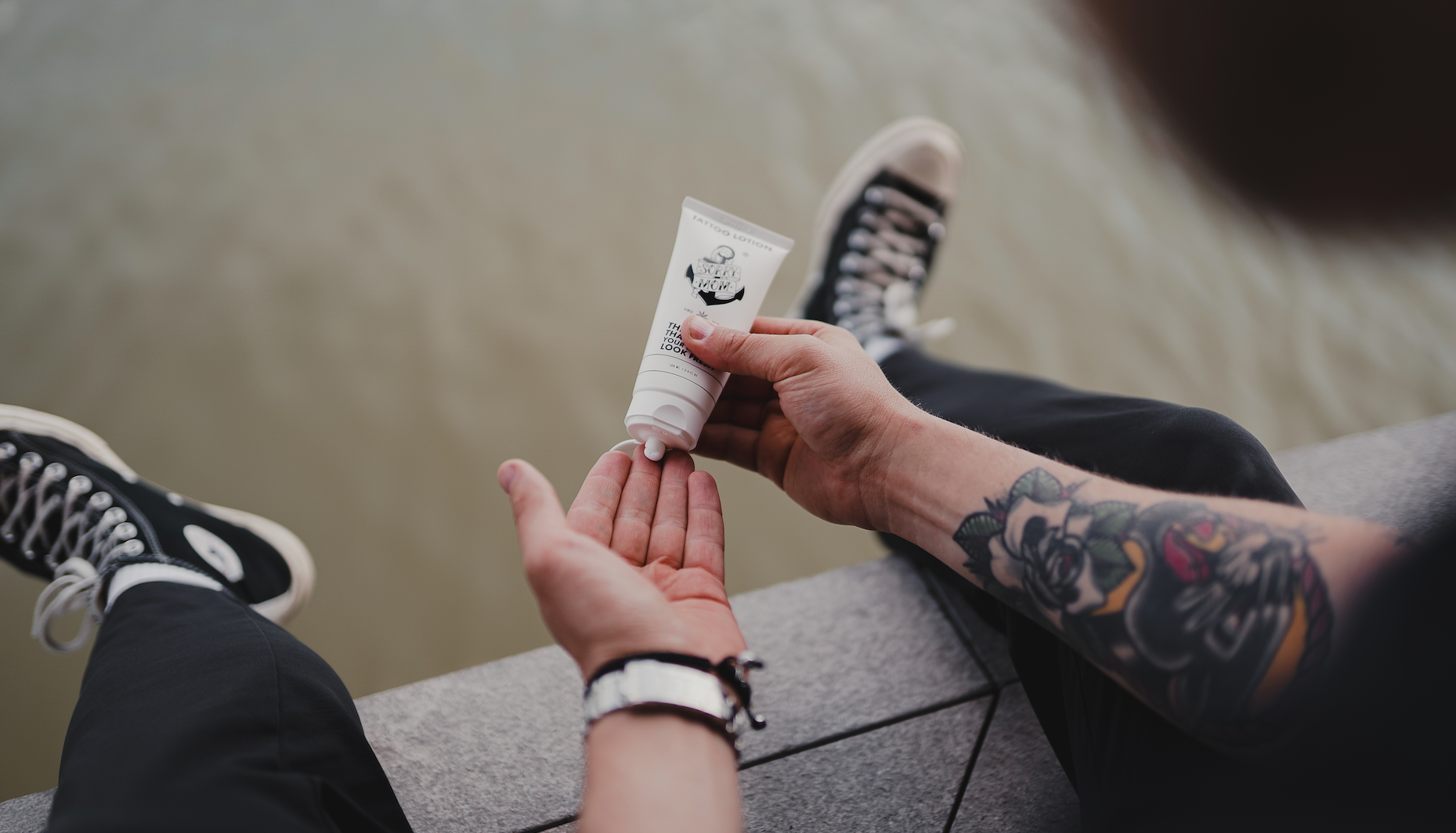Tattoos may have once been taboo or a sign of rebellion, but today they are more widely accepted than ever before. In fact, 32% of people in the US aged 14 to 29 have tattoos.
Despite having to temporarily close during the start of the pandemic, tattoo shops are seeing business gradually pick up again.
While there are standard rules and protocols for tattoo preparation, aftercare seems to vary from artist to artist. Some may cover your new ink in cling film while others prefer to put on a bandage. An artist may also recommend wet healing over dry healing.
In today's post, we'll explain the difference between the two tattoo healing methods and which can be more advantageous for your tattoo as it heals.
Wet Healing and Its Benefits
What is wet healing? Wet healing refers to the treatment of any wound in a moist environment rather than a dry one.
Let's now take a look to some of the benefits of wet tattoo healing:
1 - Accelerates the healing process
Studies have found that medical professionals use wet dressings to accelerate the wound healing process in patients compared to dry dressings. The same concept would also apply to tattoos as they're essentially wounds.
Medical professionals dress wounds this way because renewed skin will only form without eschars or inflammation if in a wet environment.
Before wet healing was being used as a method, wound dressings were mostly used to absorb fluid and limit exposure to infections. However, it was discovered that by preventing the body from forming a scab over the wound, it would heal better and faster.
2 - Decreases the likelihood of infection
Apart from taking less time to heal, wet healing also decreases the likelihood of infection in your tattoo. It also allows specialized skin cells to function more easily, such as the keratinocyte cells that aid in closing the wound.
A key vitamin in this process is Vitamin K. This is because Protein C, an important part of the keratinocyte function, is a Vitamin-K dependent glycoprotein. In another article, SymptomFind details how Vitamin K helps the healing process by ensuring your blood clots properly, which is crucial for tattoos that bleed during the process.
3 - Reduces tattoo pain
Wet healing also reduces pain. While not all tattoos will hurt significantly, minimizing the pain is very important because it lowers the stress response and reduces fatigue, promoting faster healing.
Potential Risks of Wet Healing?
While it has many benefits, wet healing also comes with potential downfalls if executed incorrectly.
There are limitations in the products that work to promote moist wound healing. There is still a lack of commercial translation with regards to the wound-healing principles in clinically available products. That's why you need to choose the products for your wet healing.
At Sorry Mom, we specialize in professional tattoo aftercare products that encourage healing, and have been clinically tested. However, you need to accompany these products with the correct preventative methods.

There is a tendency for people to over-moisturize wounds like tattoos, especially when using ointments; while moisture in the wound is essential for it to heal, an excessive amount can cause more harm than good.
Over moisturizing the area can also lead to yeast and fungus growth in your tattoo. It can also make enzymes that help remove dead tissue from the wound bed, melt the healthy skin around the wound.
Read also: Dry Healing or "How to Ruin your Tattoo"
What to Do if Your Tattoo is Compromised
Even with wet healing, tattoos may become infected.
Look out for signs such as oozing pus, swelling, raised tissue, pain, or fevers, as they are sure-fire indicators that you should seek medical help.
You can get a consultation with a medical professional – even online if need be. Not only has the digital space made it easier to reach these types of professionals, but it also allows them to get the training they need, such as specialized tracks in dermatology.
To prevent infections from happening, it is very important to follow our professional tattoo aftercare guide, particularly when applying a thin, consistent layer of regenerative balm.
Remember to gently rub in the ointment so that it isn’t clumped on your skin; it should sit in a very thin, even layer on your tattoo. This will help you prevent infections and allow your tattoo to heal quickly and beautifully.
Bottom Line
When taking care of your tattoo, you need to make sure that it's healing properly both in terms of health and aesthetics. When comparing wet healing vs dry healing, the first method outweighs the second in both categories.
Therefore, it's a no brainer for us: wet healing is the superior option.
Remember to choose the right products though! At Sorry Mom we only develop products that are especialized in professional tattoo aftercare. However, if you want to learn more about how to choose the best tattoo aftercare products, you can take a look here.
We hope this post was helpful and gave you valuable information regarding wet healing and its benefits!
This blog post has been written by RAENA JANES exclusively for SORRY MOM.


